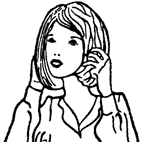I’ve got some new recordings I need to talk about (Þráinn Hjálmarsson, All That Dust) but first I should follow up on that An Assembly gig previewed a couple of weeks back. The programme of new works commissioned by the ensemble has completed a small tour of the country.
Rowland Hill’s Tha-at’s right matches, or mismatches, 16mm film footage of three dancers in a studio with a live chamber ensemble. Both are drawn from Edwin Denby’s review of Stravinsky’s ballet Agon, taking Denby’s eccentric interpretations as a score to be, in turn, interpreted into a ballet. I was looking forward to this piece, commenting that “I’m a sucker for this sort of approach, acknowledging and exploiting transmission of information as a form of cultural distortion.” It didn’t disappoint. There’s a sly humour throughout the piece, made all the more subversive by never letting the audience relax into certainty over what, or who, is being made fun of from one moment to the next. Everything obeys an external logic of which the audience is aware of but not privy to. The film is disjointed, the setting informal like a rehearsal, but the dancer’s repeated movements and the abrupt changes of camera angles emphasise a structural rigour, following a logic that is never made clear. (Think audience alienation, more Godard than Brecht, but emptied of emotional or political manipulation, leaving the punters wary and bemused and ready to laugh or rein it in at a moment’s notice. The notice never comes.) The dancers bring a discipline and dignity to the ridiculousness. Like in a Robert Ashley piece, only with movement instead of words, the music does its work while the audience is distracted, a deadpan “No comment” while slipping a diffuse, brittle collage of chamber music past our ears.
Charlie Usher’s An assembly was, as promised, 122 pieces played in 45 minutes, each piece 13 seconds long except for an extended coda. The ten musicians, conducted by Jack Sheen, were augmented by modest electronics and occasional field recordings. One thing I didn’t expect from this work was the effect of writing, playing and listening on such a reduced scale for such an extended time. The description of the work’s form conjures up mental images of a kaleidoscope, or miscellany, but this possibility is never offered to the listener. Most of the pieces have titles and were dutifully listed in the programme (“they’re there to shade the content”): they read as notes for Usher’s own benefit, significant but insubstantial. There’s little in them for the audience to latch onto as an idea and besides, who can keep track from one piece to the next? 072 The green – believe it exists. 073 Strength with all sisters. 074 Music as a trace on your day. An artist’s notebook, instigating and susbtantiated by the music.
But what is the music? 13 seconds is almost nothing. Many of the pieces have scarcely any substance at all: sound is present, and that suffices. With no time to establish much beyond that, each piece is formed with due care but without any foolish attempt to assert its distinctiveness. The pieces were ordered in such a way as to “create a sort of flatness, an avoidance of shape and drama and to put everything on the same plane”. Usher described one meaning of the title as “45 minutes with sound”, the music forming a type of public space. Even when aware of the time structure, the listener loses interest in trying to distinguish one piece from the next. A new type of listening comes about, detached from both the immediacy of the continuous present and from the awareness of details. Those two descendants of Cagean thinking do not come into play here; the faint but indelible didacticism in Cage’s aesthetics is finally effaced. An assembly allows music and listener simply to coexist, without calling either to account.
Of course it’s not that simple. That last piece, 11 minutes and 10 seconds according to the programme, is a low sun that casts the preceding music into relief. A suspended, sustained harmonic shimmer that by this point seems to extend forever. It means nothing, but it opens up a vast space for reflection. As with painting, contemplation of abstraction on that scale can get emotional.

[…] past the point when all momentum has been exhausted. It reminded me a bit of Charlie Usher’s An assembly – a forty-five minute piece composed of a hundred-plus tiny fragments – but whereas […]